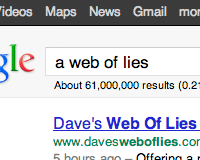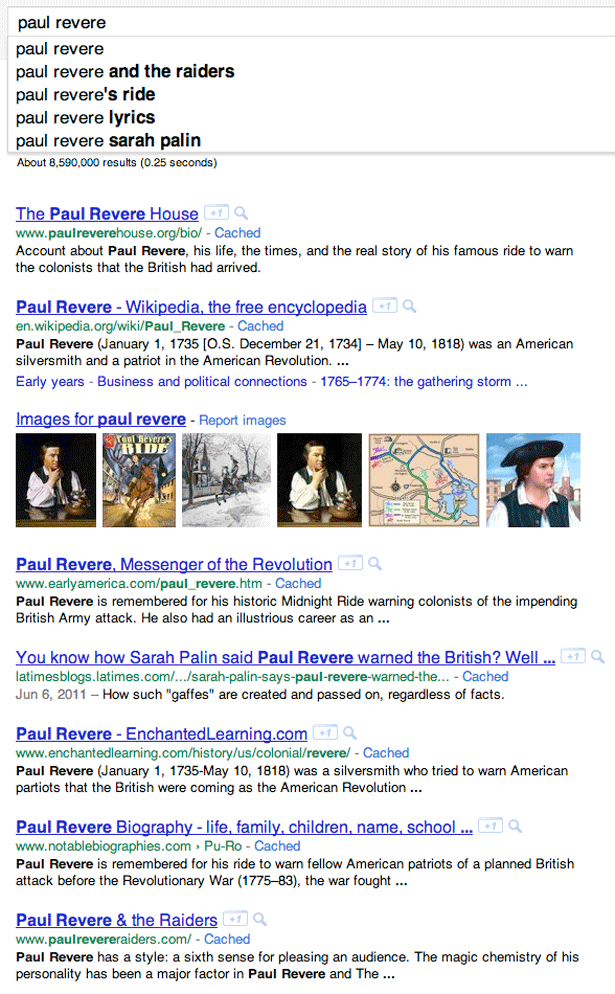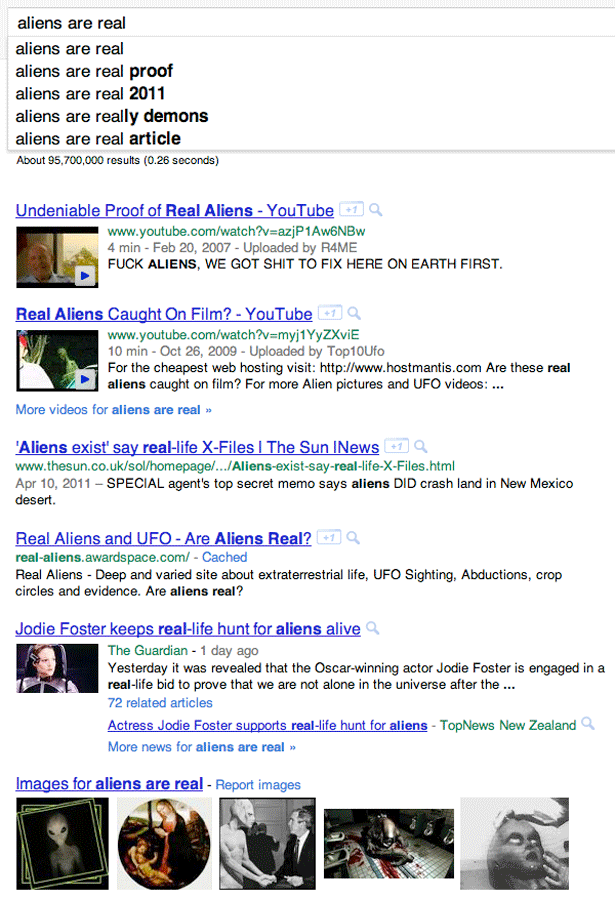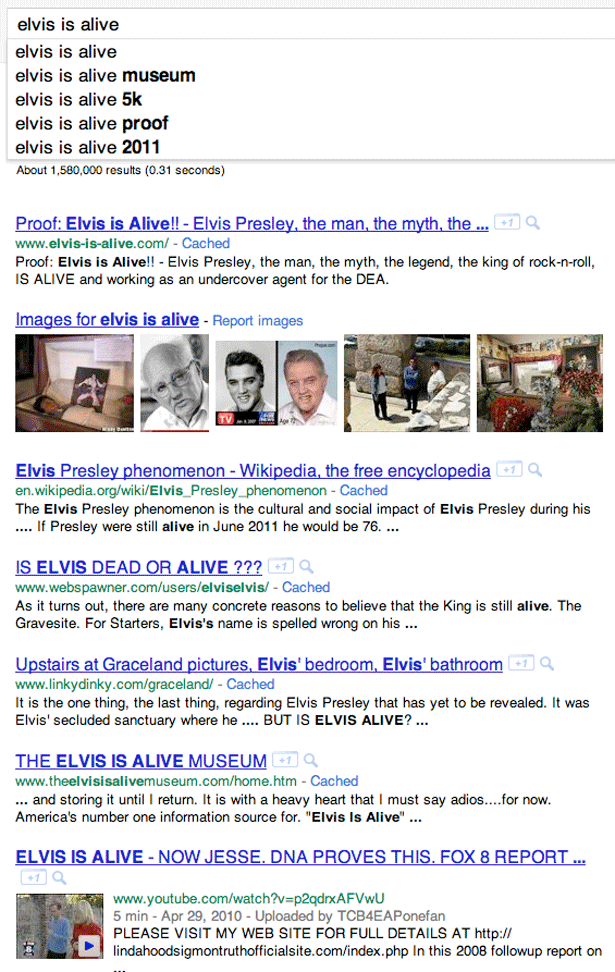 I recently added to my top ten most embarrassing moments of my professional life. No, I won’t be listing the top ten but this one was extremely disturbing because it affected a lot of people and basically went unnoticed and pushed out the truth and replaced if with a falsehood that had become the truth. I’m referring to an article I wrote about a famous designer but the images of the fantastic work weren’t actually his.
It was not my intention to prank or scam readers but I used the wonderful World Wide Web to gather my information and that was a blunder I should have seen coming. It wasn’t until a reader pointed out that the designer did not do the work, that I scrambled to find out the truth. At first, I thought, by the way the comment was worded, it was just a spam scam for a website and this was glomming onto the popularity of the article.
I started searching via Google to see if the work did truly belong to the designer, as I had found them on there. It seems my article had replaced most sources on this designer. Both a power trip and a frightening realization–I had rewritten history as far as the web was concerned.
It turns out the images, although marked with the designer’s name, were from a website created by a former student of his as a tribute to his work in “gestalt,” as the former student told me in an email. I panicked. Yes, my first thought was of how I had screwed over my career as a writer and how a blog, for which I had worked for so long had no choice but to fire me to save face. My second thought was of how stupid and lazy I had been to just trust information found on the internet.
With a heartfelt apology, a thoughtful rewrite and a saint of an editor who imparted, “it happens” I was able to fix the misinformation, which was—as hours rolled past and I calmed down, pleased with my humbling experience and admission—more a concern of setting history right again. I now understand the trauma of the heroes in time travel movies…except for Bill and Ted.
Time will tell if the damage is fixed…or if anyone really cares.
I recently added to my top ten most embarrassing moments of my professional life. No, I won’t be listing the top ten but this one was extremely disturbing because it affected a lot of people and basically went unnoticed and pushed out the truth and replaced if with a falsehood that had become the truth. I’m referring to an article I wrote about a famous designer but the images of the fantastic work weren’t actually his.
It was not my intention to prank or scam readers but I used the wonderful World Wide Web to gather my information and that was a blunder I should have seen coming. It wasn’t until a reader pointed out that the designer did not do the work, that I scrambled to find out the truth. At first, I thought, by the way the comment was worded, it was just a spam scam for a website and this was glomming onto the popularity of the article.
I started searching via Google to see if the work did truly belong to the designer, as I had found them on there. It seems my article had replaced most sources on this designer. Both a power trip and a frightening realization–I had rewritten history as far as the web was concerned.
It turns out the images, although marked with the designer’s name, were from a website created by a former student of his as a tribute to his work in “gestalt,” as the former student told me in an email. I panicked. Yes, my first thought was of how I had screwed over my career as a writer and how a blog, for which I had worked for so long had no choice but to fire me to save face. My second thought was of how stupid and lazy I had been to just trust information found on the internet.
With a heartfelt apology, a thoughtful rewrite and a saint of an editor who imparted, “it happens” I was able to fix the misinformation, which was—as hours rolled past and I calmed down, pleased with my humbling experience and admission—more a concern of setting history right again. I now understand the trauma of the heroes in time travel movies…except for Bill and Ted.
Time will tell if the damage is fixed…or if anyone really cares.
The truth and the legend
Comedian Robert Wuhl, in his HBO show “Assume The Position,” teaches the difference between true history and the legend that became the truth. As he often repeats, “when the legend becomes more famous than the truth, print the legend!” Frightening but true… or is it legend? Paul Revere only road a few miles before being seized by the British and soiling his britches while other riders traveled from Boston to as far as New York. Revere was released while other riders were imprisoned. Thanks to Henry Wadsworth Longfellow, Revere is famous and no one else knows the name of the other men (“he deliberately skewed the facts in the poem for poetic effect—it's not at all historically accurate. I think that should be pointed out in the post,” as the editor of WDD pointed out to me when I sent over the draft of this article). History is full of such examples and we grow up reading history books that forget our forefather’s indiscretions, murder, rape, and dishonesty. While my own foolhardily researched article had only one or two of those, it doesn’t excuse the falsehoods portrayed as the truth.
The web is full of misinformation. Wikipedia has grown to become a trusted source of information, killing off the Encyclopedia Britannica, which parents use to buy their children one book at a time, usually missing several so a child couldn’t look up anything that started with G-J, L-N and the always ignored X, Y and Z. Of course, Wikipedia is written by anyone who has internet access and decides to pick a subject or just make one up. Misinformation abounds!
History is full of such examples and we grow up reading history books that forget our forefather’s indiscretions, murder, rape, and dishonesty. While my own foolhardily researched article had only one or two of those, it doesn’t excuse the falsehoods portrayed as the truth.
The web is full of misinformation. Wikipedia has grown to become a trusted source of information, killing off the Encyclopedia Britannica, which parents use to buy their children one book at a time, usually missing several so a child couldn’t look up anything that started with G-J, L-N and the always ignored X, Y and Z. Of course, Wikipedia is written by anyone who has internet access and decides to pick a subject or just make one up. Misinformation abounds!
 When people get email notices for schemes of transferring millions of dollars from dead Nigerians or notices of winning the Euro lottery, some eagerly send their bank information and others go to Snopes.com to see if the promise of easy money is a scam or the answer to a lifelong dream. When pleas to help poor stricken children with cancer by sending email addresses are posted to Facebook news feeds, some people go to Snopes.com and embarrass their friends by publicly posting that it’s a scam…if Snopes is correct, that is. Perhaps the editor/writer isn’t correct and some poor child’s hopes of a world record before dying falls flat. That would be tragic. As with my blunder with the aforementioned article, sometimes it happens purely by mistaken good intentions. Sometimes it doesn’t.
The biggest newspapers and news sources often make mistakes. When a huge headline, splashed across the front page destroys someone’s life, the retractions are often found buried on the second or third page of some future issue. Absence of malice is the theory that news is reported with the information at hand, at any given time. A person or persons may be known to be innocent of charges but a source claims they are not, ergo, the party or parties are guilty if those who know differently are not allowed equal time to put forth their information. That rarely happens…in Fantasyland! In the real world, it happens thirty or forty times every hour.
In our own humble industry it can be the wrong steps in tutorials, bugs in certain apps that aren’t mentioned, and ads about art school money-toilets that crank out graduates without training or a clue about becoming a professional. And yes, it can be the same problem I faced with my article with the wrong images. I hate bringing it up again but I deserve the spanking, so self-flagellation will show my regret.
When people get email notices for schemes of transferring millions of dollars from dead Nigerians or notices of winning the Euro lottery, some eagerly send their bank information and others go to Snopes.com to see if the promise of easy money is a scam or the answer to a lifelong dream. When pleas to help poor stricken children with cancer by sending email addresses are posted to Facebook news feeds, some people go to Snopes.com and embarrass their friends by publicly posting that it’s a scam…if Snopes is correct, that is. Perhaps the editor/writer isn’t correct and some poor child’s hopes of a world record before dying falls flat. That would be tragic. As with my blunder with the aforementioned article, sometimes it happens purely by mistaken good intentions. Sometimes it doesn’t.
The biggest newspapers and news sources often make mistakes. When a huge headline, splashed across the front page destroys someone’s life, the retractions are often found buried on the second or third page of some future issue. Absence of malice is the theory that news is reported with the information at hand, at any given time. A person or persons may be known to be innocent of charges but a source claims they are not, ergo, the party or parties are guilty if those who know differently are not allowed equal time to put forth their information. That rarely happens…in Fantasyland! In the real world, it happens thirty or forty times every hour.
In our own humble industry it can be the wrong steps in tutorials, bugs in certain apps that aren’t mentioned, and ads about art school money-toilets that crank out graduates without training or a clue about becoming a professional. And yes, it can be the same problem I faced with my article with the wrong images. I hate bringing it up again but I deserve the spanking, so self-flagellation will show my regret.
The average designer has to be on guard
“How can I get into trouble if I don’t steal anything or research thoroughly?” you may ask. Your research may depend on false sources. No matter how many sources you use, they may all be an ever-widening ripple in a pond, started from the untrue pebble dropped in the middle. My article, for example, pushed every other source many pages into Google responses. So far in, in fact, that many sources will never be viewed again. What if people use my article as a source for their own research? Would books and publications have helped me stay on the narrow path of truth? Perhaps. The printed word tends to be under greater scrutiny. In my days of publishing, magazines and book publishers had fact-checkers on staff. Their sole responsibility was to research and officially authenticate claims of truths in every printed word. The economy has, of course, cut fact-checkers from staffs, apparently in greater numbers than proofreaders and competent management. Why worry about truth anymore when the public eats up the legend if it sounds better than the truth?
Why fight it? We’ve all heard clients tell us to “just leave it that way!”
Because it’s wrong. Because when the truth is too easily pushed aside, our very existence as a society dies. Anarchy sounds fun but try shopping for food or eating out when everyone runs amok with a sense of entitlement to their own rules, which have little or no respect for you. Imagine packaging that omits certain ingredients like rat droppings and machine part shavings or a child’s toy that fails to mention, “broken glass and rusty razor blades may protrude from the Hug-Me-Betsy doll.” The big difference of doing the right thing is what keeps our society afloat. The “truth in advertising” law is only a few decades old, which explains why ineffective medication and highly flammable pajamas were sold to hapless consumers for so many years.This is why crowdsourcing fails
There are many complaints about crowdsourcing but one of the biggest is that the designs supplied to clients looking for cheap solutions are not thoroughly researched. Normally, when a designer is engaged to do a company’s branding, logo, or collateral material, he or she will research the design direction to make sure the material doesn’t infringe on existing designs. With crowdsourcing, it has long been known that there is a problem with “inspiration” from existing designs. What can one expect when someone is paid $99 to provide designs worth thousands? Naturally the designers who participate in crowdsourcing or contest want to do the work quickly by cutting corners. Research is the first step to be cut. It happens, sometimes by accident. Years ago, the National Broadcasting Company (NBC) had their logo redesigned from the ubiquitous peacock into a graphic “N.” A small station, somewhere in Nebraska, was using the very same logo. Well, small or not, they had it first and NBC was looking at major embarrassment, redesigning the logo and reprinting a million dollars worth of stationery, envelopes, signage, etc. With some negotiations and a large donation to the small TV station, NBC was able to keep their new logo and the tiny station redesigned their logo. Whew! It has happened before and will keep on happening because people use the quick solution–look it up on the web! The web does not contain all the knowledge of the universe and judging from all the conspiracy theory and racial hate sites, much of the information is not true.What Can You Do?
First responses on Google are not the best basis for research. You have to dig down through the layers and keep digging. Even with that, I’ve fallen into the same mistake a couple of times. Being spanked publicly for this blunder is embarrassing, albeit deserved. You don’t want it happening to you AND your client! If you use the internet for research, dig, dig, and dig some more. When in doubt–don’t use what you find. Whether you are creating a logo, writing an article, or designing a web site, you are the final say and you are responsible for any information, image, or link you use. If a client hands you images for their project, you need to take responsibility and tell them the information can’t be used. Your reputation can be crushed with just one little mistake.
If you are tagging or labeling images or links, make sure they are unique. In my research for material, people who label images with the wrong information have duped me. Don’t count on everyone having the smarts to say, “by the way, these images are stolen from another source, are not mine or (artist’s name) and I just decided to put them up on the web because I have no idea about the copyright law and I’m only eleven years old.”
The web has made us lazy. Everything comes fast with the click of a mouse or tap of a Wacom stylus. Get back in the habit of doubting what you see because chances are, you have not won some big lottery or inherited millions from some dead Nigerian banker. Chances are, you will be making a huge mistake and will feel the sting once others point it out for everyone to see.
Have you been duped by information found on the web, only to find out it was false? What happened?
Whether you are creating a logo, writing an article, or designing a web site, you are the final say and you are responsible for any information, image, or link you use. If a client hands you images for their project, you need to take responsibility and tell them the information can’t be used. Your reputation can be crushed with just one little mistake.
If you are tagging or labeling images or links, make sure they are unique. In my research for material, people who label images with the wrong information have duped me. Don’t count on everyone having the smarts to say, “by the way, these images are stolen from another source, are not mine or (artist’s name) and I just decided to put them up on the web because I have no idea about the copyright law and I’m only eleven years old.”
The web has made us lazy. Everything comes fast with the click of a mouse or tap of a Wacom stylus. Get back in the habit of doubting what you see because chances are, you have not won some big lottery or inherited millions from some dead Nigerian banker. Chances are, you will be making a huge mistake and will feel the sting once others point it out for everyone to see.
Have you been duped by information found on the web, only to find out it was false? What happened?
Speider Schneider
Speider Schneider is a former member of The Usual Gang of Idiots at MAD Magazine and has designed products for Disney/Pixar, Warner Bros., Harley-Davidson, ESPN, Mattel, DC and Marvel Comics, Cartoon Network and Nickelodeon among other notable companies. Speider is a former member of the board for the Graphic Artists Guild, co-chair of the GAG Professional Practices Committee and a former board member of the Society of Illustrators. Follow him on Twitter @speider or add him on Google+
Read Next
20 Best New Websites, April 2024
Welcome to our sites of the month for April. With some websites, the details make all the difference, while in others,…
Exciting New Tools for Designers, April 2024
Welcome to our April tools collection. There are no practical jokes here, just practical gadgets, services, and apps to…
14 Top UX Tools for Designers in 2024
User Experience (UX) is one of the most important fields of design, so it should come as no surprise that there are a…
By Simon Sterne
What Negative Effects Does a Bad Website Design Have On My Business?
Consumer expectations for a responsive, immersive, and visually appealing website experience have never been higher. In…
10+ Best Resources & Tools for Web Designers (2024 update)
Is searching for the best web design tools to suit your needs akin to having a recurring bad dream? Does each…
By WDD Staff
3 Essential Design Trends, April 2024
Ready to jump into some amazing new design ideas for Spring? Our roundup has everything from UX to color trends…
How to Plan Your First Successful Website
Planning a new website can be exciting and — if you’re anything like me — a little daunting. Whether you’re an…
By Simon Sterne
15 Best New Fonts, March 2024
Welcome to March’s edition of our roundup of the best new fonts for designers. This month’s compilation includes…
By Ben Moss
LimeWire Developer APIs Herald a New Era of AI Integration
Generative AI is a fascinating technology. Far from the design killer some people feared, it is an empowering and…
By WDD Staff
20 Best New Websites, March 2024
Welcome to our pick of sites for March. This month’s collection tends towards the simple and clean, which goes to show…
Exciting New Tools for Designers, March 2024
The fast-paced world of design never stops turning, and staying ahead of the curve is essential for creatives. As…
Web Tech Trends to Watch in 2024 and Beyond
It hardly seems possible given the radical transformations we’ve seen over the last few decades, but the web design…
By Louise North















